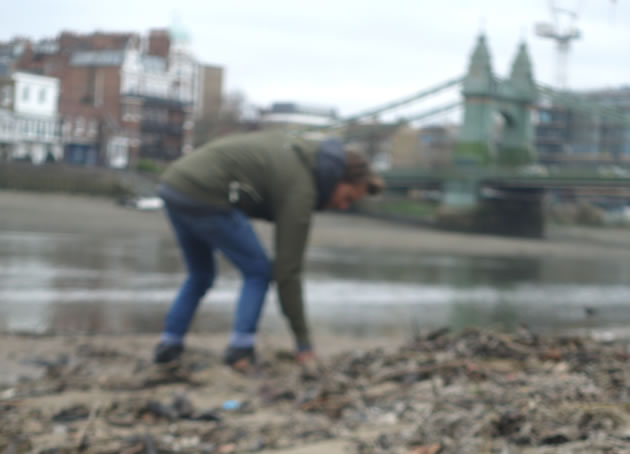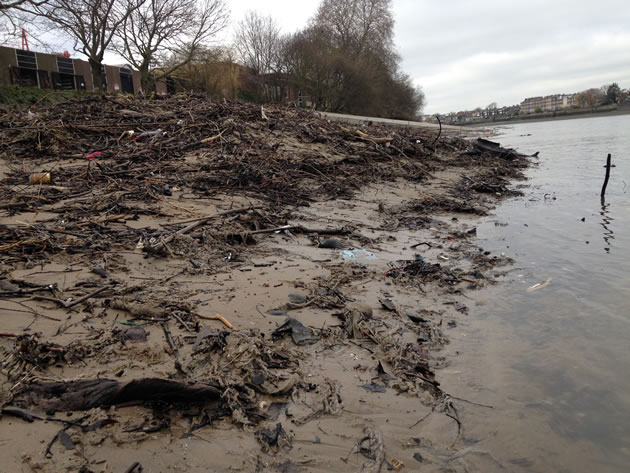Giant 'Wet Wipe Reef' Found Near Hammersmith Bridge
23,000 wipes found on one stretch of the Thames foreshore

Volunteer works on the clean up of wet wipes. Picture: Thames 21
A record 23,000 wet wipes were removed from a small section of the Thames foreshore in just two hours.
Volunteers from Thames21, an organisation that campaigns for a cleaner river and collects data on pollution and plastic, cleaned the stretch alongside the river in Barnes, close to Hammersmith Bridge last month.
They filled 473 bin bags with the offending wet wipes, and monitored nine large mounds that make up the “Thames Great Wet Wipe Reef”.
Photographs of the area show huge deposits of wet wipes that have collected in debris like twigs and leaves to clump together and create dark patches along the riverbank.
They look natural, but the average density is 201 wet wipes per square metre on the surface of the mounds – four other similar sites exist elsewhere along the Thames in London.
One of the largest mounds in the Barnes site, in front of private school St Paul’s, is growing and has now reached 50m wide, 17m long and stands at more than 1m high.
Alice Hall, coordinator of the Thames River Watch citizen science monitoring programme, which organised the event, said: “Our rivers are becoming plastic rubbish dumps: millions of wet wipes, which often contain plastic, being flushed down loos and then discharged into our rivers when the sewers can’t cope.
“We’ve seen the mounds growing very fast over the past few years.”

Picture: Thames 21
Many wet wipes, even those marked as flushable, contain plastic and no not bio-degrade – they end up in the Thames and harm wildlife.
Ms Hall said: “Three things need to happen.
“We all need to bin, don’t flush, no matter what it says on the packet; politicians need to ban inaccurate wet wipe labelling; and we can all start choosing reusable alternatives where possible. “
Calum Rutter – Local Democracy Reporter
April 9, 2019